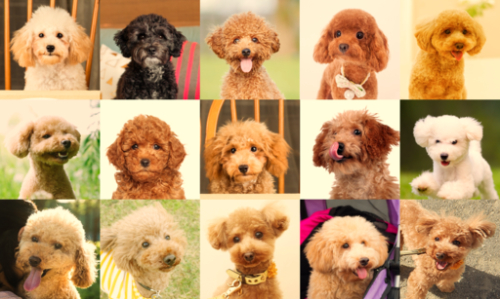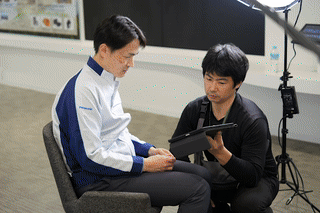JStories ー For many people, their hair is both an important way to express themselves and closely tied to self-confidence. So, when someone loses their hair due to illness or medical treatment, not only can it cause mental suffering, but it can also restrict activities such as socializing and sports, significantly reducing the person’s quality of life. Changes in appearance can also lead to prejudice from others, causing hurt and loneliness.
Japanese startup harih Corp. was founded in February 2023 with a mission to develop wigs that allow individuals to live authentically and free themselves from the hardships caused by hair loss. Its name comes from the Sanskrit word “harih,” meaning “that which removes suffering.” True to its name, the company supports the daily lives of people who have lost their hair. Utilizing technology to pursue functionality as well as beauty, it sees wigs not as something to hide bodily imperfections, but as an extension of the body itself.

Ikeno began developing wigs following the inconvenience and distress she suffered when autoimmune-related alopecia caused her to suddenly lose her hair in 2018. She tried ready-made wigs but found they slipped easily during sports and other physical activities and couldn’t be worn in water. Having experienced the impracticality of such wigs, she decided to make her own.
However, although she had some experience in apparel, she was a complete newcomer to the beauty field. So, for 10 months she took a job at a large wig company, working in the back office and researching the design and manufacture of wigs.
“Maybe I can design a wig myself,” she thought.
Ikeno realized that repairing wig base nets was a sewing task and became convinced that this was a field where she could make use of her skills from the apparel business. Later, she took a “BusiNest” course run by the Organization for Small & Medium Enterprises and Regional Innovation, which gave her knowledge about business development. Her startup journey had begun.
The special thing about the “sports wigs” developed by harih is that, instead of focusing on “natural appearance,” their design prioritizes solving user issues that make wigs uncomfortable or difficult to wear, such as slipping, feeling heavy, causing sweating and unwanted odors.

To achieve this, harih wigs make use of innovative technologies not found in other products. For example, they employ a patent pending molding method called “seamless base unit.” Conventionally, wig molds are made using vinyl bags, but harih takes highly detailed 3D scans of the wearer’s head to create a wig base that fits perfectly.
The wigs also use a new material developed by Mitsui Chemicals called “Humofit.” This material, which is used around the wearer’s face, self-adheres in response to body temperature and expands with heat. Thanks to this innovative fitting method, the wig can be attached with just the heat from a hair dryer and won’t slip even during vigorous exercise.
Thanks to this, the wig is easier on the wearer’s scalp, and is less likely to slip. The base net, meanwhile, consists of a single mesh layer, making it lightweight and breathable. It can be worn comfortably even during the hot Japanese summer, unlike conventional wigs that tend to feel clammy.

The inner caps have a 99.9% pure silver coating, which provides strong antibacterial and odor-reducing benefits. Even after a week of wearing, the wigs remain free of odor, and because they are also quick-drying, there is no need for frequent washing. Additionally, the wigs’ seamless design reduces rubbing and makes them more gentle and comfortable to wear against the skin than conventional hairpieces.
Ikeno explains her ambitious jump into the wig business as “bringing together all the things I have done to date,” allowing her to leverage the experience she gained at major apparel companies such as Lacoste, Adidas Japan, and Goldwin. Her expertise with sportswear, which is designed to enhance an athlete's performance, has led her to make wigs lighter and include advanced material. At the same time, her experience of planning and development, and of marketing, has helped her drive forward her business’s growth.

Ikeno set up harih in the central Japanese prefecture of Toyama. Deciding factors were generous support from the prefecture, including grants of up to 2 million yen from the Toyama UIJ Turn Company Support Program to facilitate relocation and company establishment, and being selected for the startup support program T-Startup. Ikeno was also able to move into Scop Toyama, a startup support facility that combines living and working spaces, providing a further boost to her business’s launch.
The company’s sales efforts include collaboration with Ikeno’s sister, a medical beautician living in Tokyo, appearing at events at the Osaka International Cancer Institute, and connecting directly with potential customers via social media. Going forward, Ikeno plans to use a nationwide network of shared beauty salon spaces and medical beauticians to efficiently provide wig maintenance services.
In addition to being selected for the T-Startup program and receiving development funds from Toyama Prefecture, harih raised 750,000 yen through crowdfunding up to 2023. On August 8, 2024, the company also secured funding from Green Core Co. Ltd., allowing it to speed up research and development.
A particular concern for Ikeno is how to keep down the cost of wigs for users.
“Patients having chemotherapy tend to get their hair back within a year at the earliest and two years at the latest, although there are individual differences," she explains.. "So, it is quite a financial burden for them to buy multiple expensive wigs."
For that reason, she is looking to introduce a subscription model. This would lessen the financial and mental burden of buying costly wigs, while also reducing the environmental impact and boosting sustainability via the maintenance and reuse of wigs. She is currently testing the subscription model with plans to roll it out in full next year.

Ikeno is also considering a “wig donation system” that could utilize 3D scanning to provide optimal wigs to even more people. In addition, as the caps worn under hairpieces have turned out to be popular with motorcycle helmet wearers as well as wig users, the company plans to develop its business in two main areas: wigs and inner caps.
Japan’s women’s wig market is expected to grow to 85 billion yen by 2028 and covers not just medical wigs but also fashion wigs and wigs for elderly users. Human hair is the most expensive wig material, but artificial hair and artificial human hair mixes cater to various price needs.
Ikeno says that harih aims to leverage its unique technology and services to reach sales of about 50 units and 20 million yen in fiscal 2025, around 300 million yen in 2026, and around 1 billion yen in 2029.
Translated by Tony McNicol
Edited by Mark Goldsmith
Top photo: Photo courtesy of harih Corp.
For inquiries regarding this article, please contact jstories@pacificbridge.jp
***
Click here for the Japanese version of the article


![[Interview] How Japanese musician Grover turned his passion of ‘sound’ into a health-tech startup](https://storage.googleapis.com/jstories-cms.appspot.com/images/1746181078493R7__1407_smallthumbnail.jpg)


![[Podcast] Japanese technology to supercharge human fertility (Part 3)](https://storage.googleapis.com/jstories-cms.appspot.com/images/1766558713084place-for-scientific-research-2025-03-07-14-08-49-utc%20(1)_bigthumbnail.jpeg)
![[Interview: Part 2] A digital approach to tackle child hunger in Japan with dignity](https://storage.googleapis.com/jstories-cms.appspot.com/images/1766130666509unnamed_bigthumbnail.jpg)
![[Podcast] Japanese technology to supercharge human fertility (Part 2)](https://storage.googleapis.com/jstories-cms.appspot.com/images/1765863548035unnamed-7_bigthumbnail.jpg)
![[Podcast] Japanese technology to supercharge human fertility (Part 1)](https://storage.googleapis.com/jstories-cms.appspot.com/images/1765440905082unnamed_bigthumbnail.jpg)
_bigthumbnail.jpeg)





![[Interview] When digital and physical worlds meet](https://storage.googleapis.com/jstories-cms.appspot.com/images/1747974430456unnamed-2_smallthumbnail.png)




_smallthumbnail.jpeg)

![[Interview: Part 1] From nourishing souls to feeding the hungry](https://storage.googleapis.com/jstories-cms.appspot.com/images/1763695595492unnamed_smallthumbnail.jpg)

